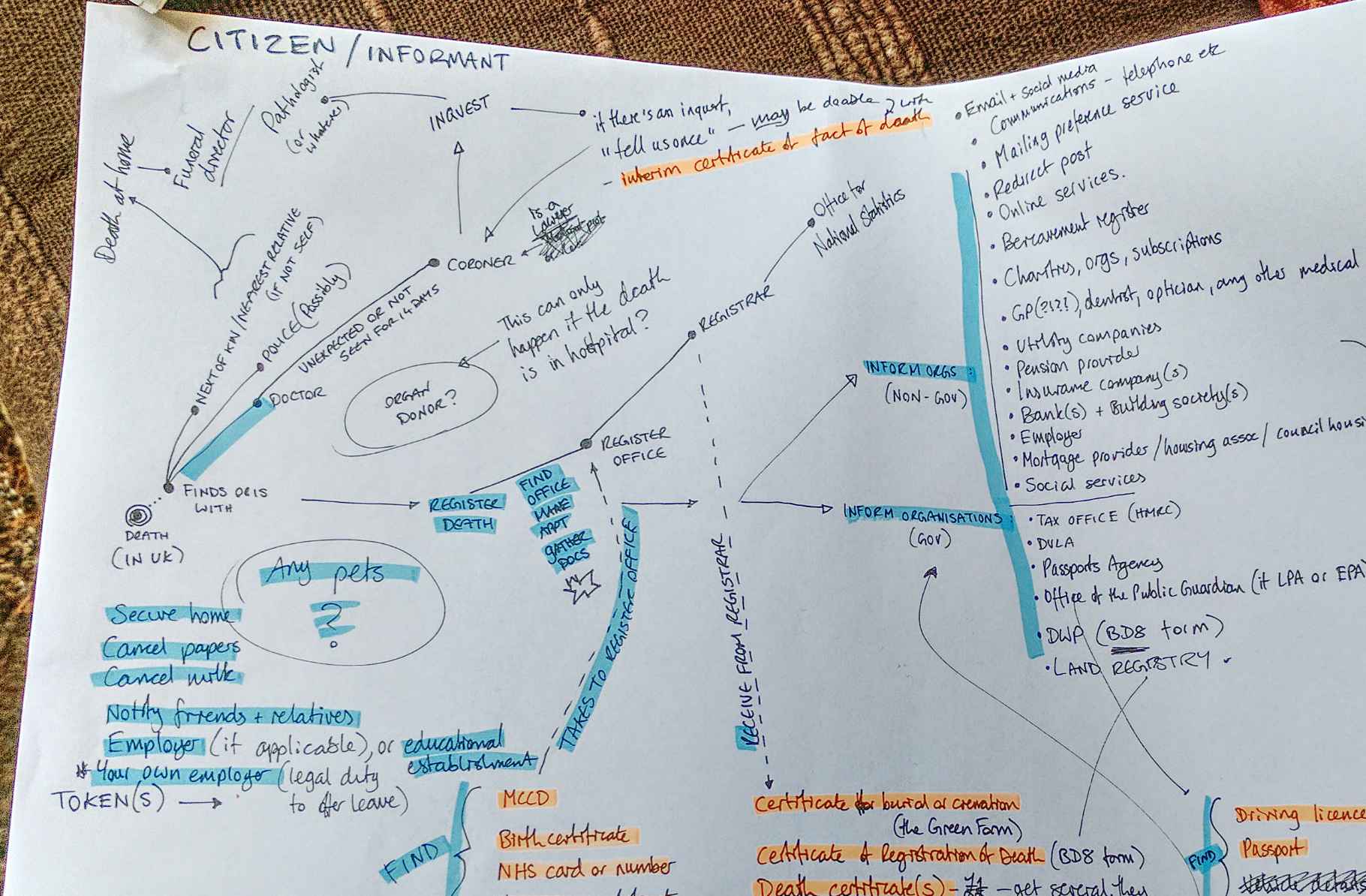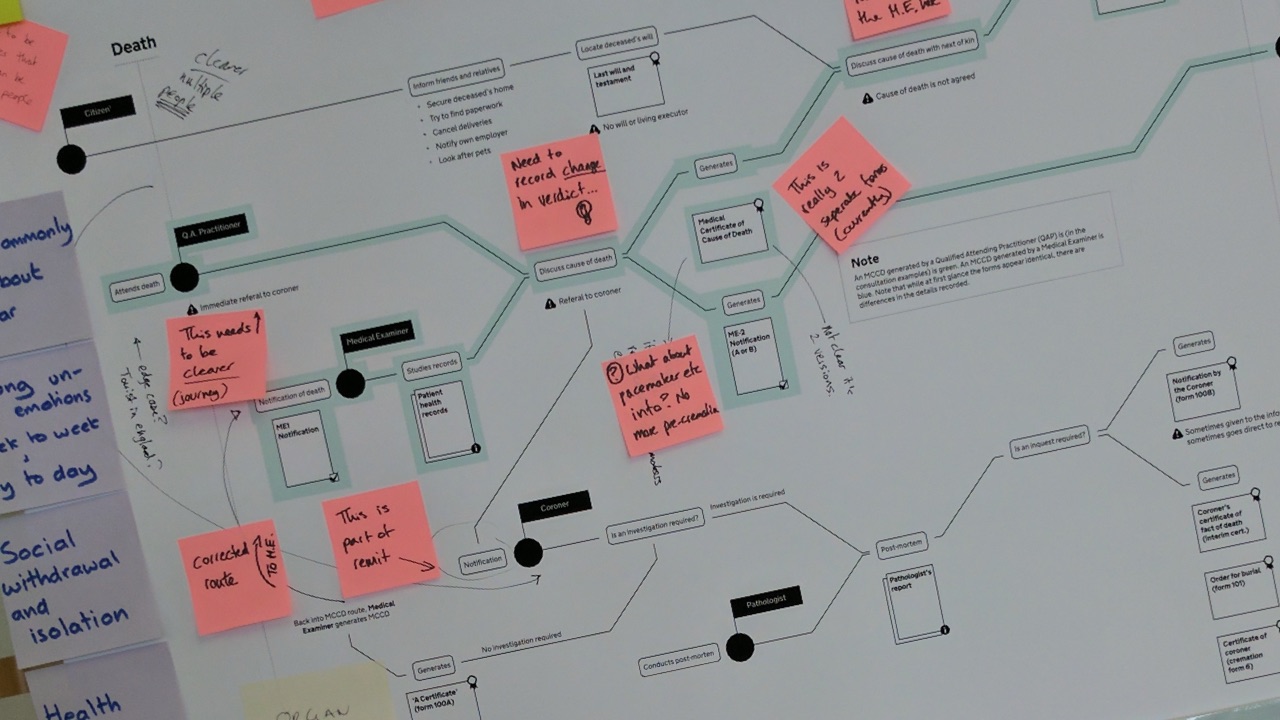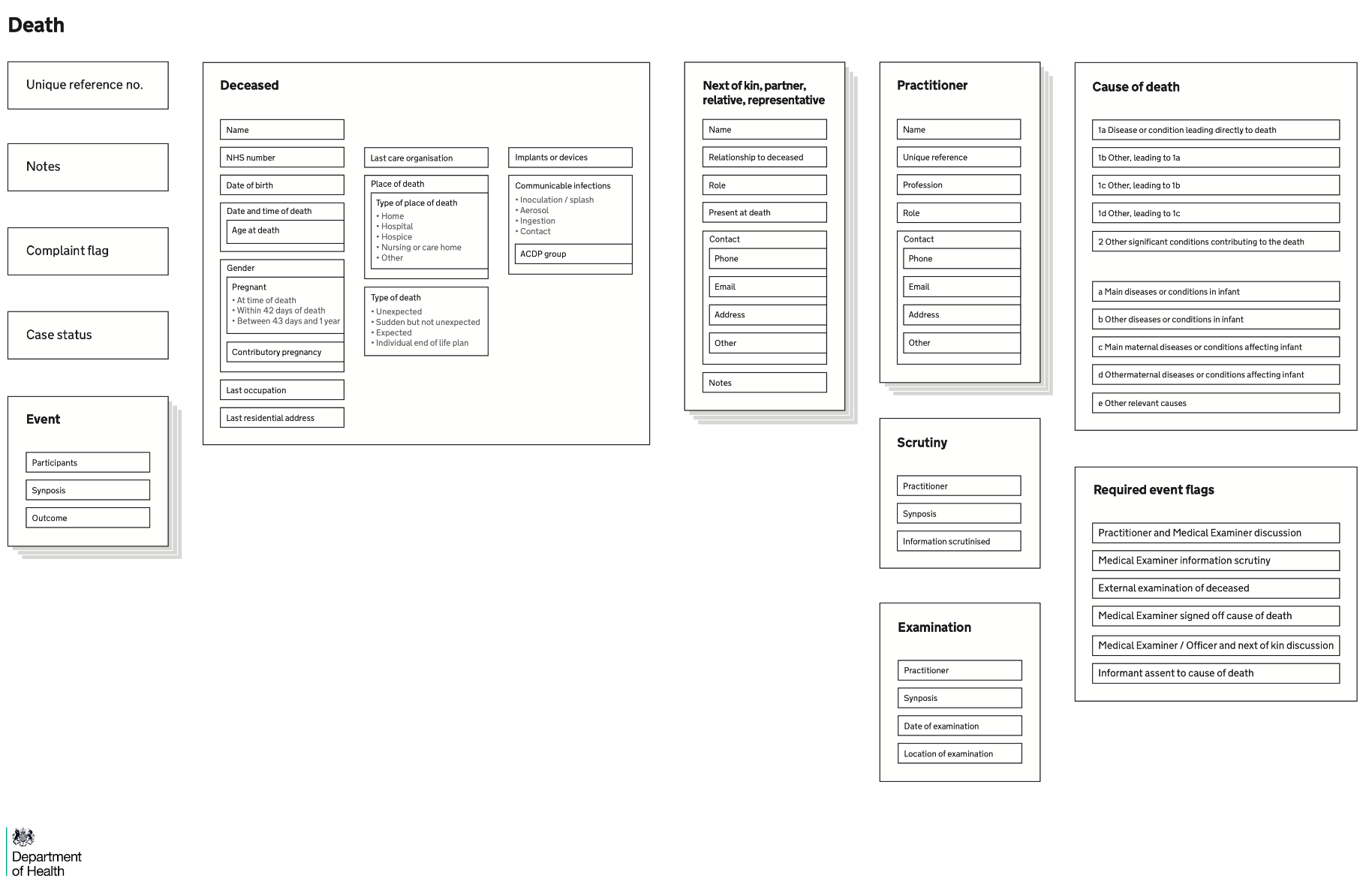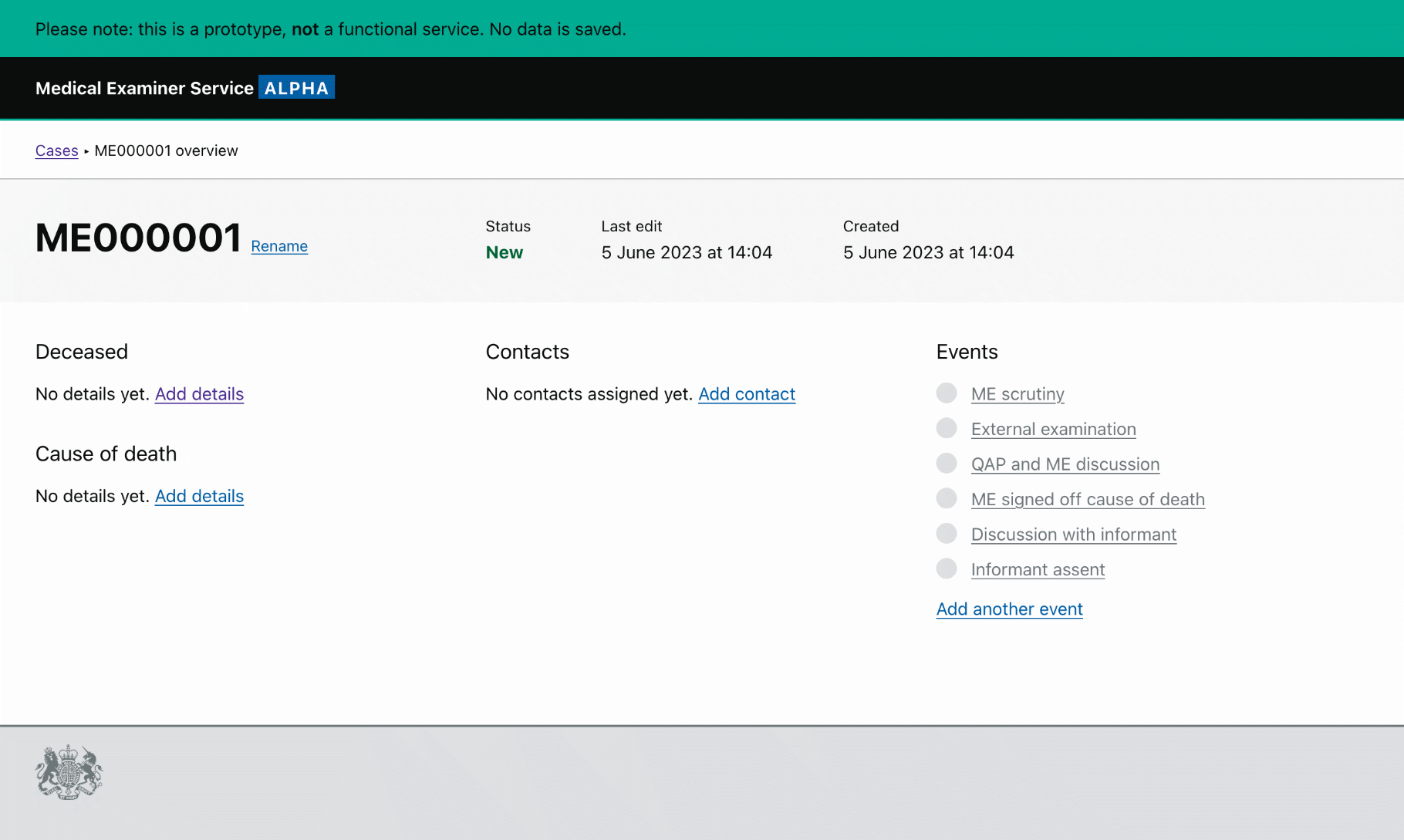The brief
In May 2016 the Department of Health published guidance on death certification reforms:
Existing arrangements for death certification are confusing, provide inadequate safeguards, and there is no mechanism that allows the NHS to see patterns, take action and learn from them.
DH Digital was commissioned to work with the policy unit to discover how digital might assist in the delivery of the new medical examiner role as recommended by the reforms.
The work
We joined at a point where there were a small number of pilots in progress. The department was trialling the policy as a series of paper forms that embedded the new medical examiner process within existing death certification.
We ran a few work streams to catch up. From the knowledge gained we were then able to build an early prototype to suggest how a digital tool could make the service more efficient and less onerous for those involved in providing it.
The informant and the system
We examined the bureaucratic process of death:
- what does someone (the “informant”) have to do in order to notify all relevant organisations of a death?
- within that wider journey where does death certification sit?
This entailed desk research, observation in secondary care settings, and working with service designers across government departments to identify the full picture.

The output was a map of the process which was referred to and evolved during the project. The point of the map was to serve as a context-setting device to properly seat the medical examiner service within the wider journey of the informant (for example the next of kin).

Learnings from pilots
Sheffield and Gloucester were two areas piloting the policy. We interviewed and observed medical examiners, coroners, and clerical staff to understand variation in context and implementation, such as:
- death in a secondary care setting
- death in the community
Understanding these pilot workflows helped us prototype and promote agnostic tooling, meaning data and policy requirements could be met without imposing a single workflow on multiple service contexts.

The data model
Abstracting a set of paper forms into a model of the underlying information allowed us to focus on the data any digital tooling needed to gather.

The exercise let us take a step back from the implied workflow in the sequence of forms. Instead we could think about any required events in isolation.
Blueprinting
The various discovery streams allowed us to produce a classic service blueprint. We used this in conjunction with the wider map in order to add more granular and operational detail to the service we were specifically concerned with.

Prototype a digital system
By getting into the the guts of a clinically-led service while concurrently investigating the “civilian” touchpoints involved, we had a solid understanding of the needs that had to be met by a digital product within the service.
While thinking about how a digital product might work, we had a few key themes in mind:
Gather information, don’t cement process
The sequential nature of the existing policy design implied that certain events in the process had to happen in a certain order. We made sure to constantly check how necessary this was, as pilot workflows were variable and localised. We avoided cementing inflexible and universal workflow rules into our product design.
Allow for individuals styles and differing contexts
Different practioners (for example different medical examiners) have different styles. While the information gleaned needs to be consistent, the method and style of that information is gathered can vary.
In a similar vein, each different case (a death) will have different contexts, possibly requiring (again) different styles from those involved.
Our product needed to be flexible and agnostic enough to have zero impact on differing styles and contexts.
We developed a small prototype to show what a digital service might look like. Our understanding from the research let us quickly sketch the bones of a system that worked intuitively and simply, while fitting the policy requirements.

A strong aspect of the work was how (when tested) the prototype successfully demonstrated a detachment of required knowledge (data model) from ceremony (workflow and human interaction).
Outcomes
Our work was bundled into a discovery report and subsequently fed into an alpha statement of work.
Thoughts
DH Digital was really engaging and interesting. It was a lovely small team of great people, and I was able to work at multiple altitudes from high level right down into prototyping. Being inside DH meant working closely with policy and that blending felt like a very healthy way to work.
The death certification project in particular involved a lot of in-depth research, both at the desk, but also in person and in context. I’m thankful to all the people who made time for us in secondary and community care; the coroner’s office; and especially the bereaved who were willing to share their experience in the moment with us.